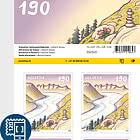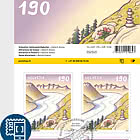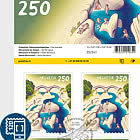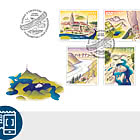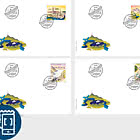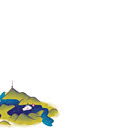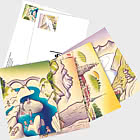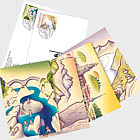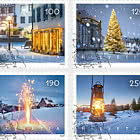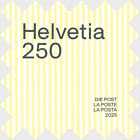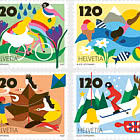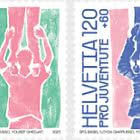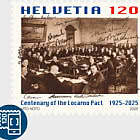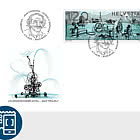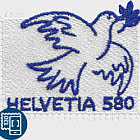Impressive mountains, powerful glaciers, historical towns and rugged valleys the stamp set launched in 2024 is dedicated to Swiss attractions. Once again, the designs will transport you to four national highlights.
A secret Bernese language
The Aare wraps around Bern’s old town like an embrace. Directly by the river lies the Matte district, the oldest in the city. While it is now a desirable residential area, it was once home to Bern’s poorest community, who developed their own dialect. Several words found their way into Bernese German, including “Gieu” for boy. Residents also invented a secret language, Mattenenglisch, by swapping syllables and vowels. According to the Matteänglisch Club’s online interpreter, for example, the High German word for a stamp would transform from “Briefmarke” into “ief ’bre-irke’me”.
View of a UNESCO World Heritage Site
The heart of the Swiss Alps Jungfrau- Aletsch UNESCO World Heritage Site is the Great Aletsch Glacier. In the Aletsch Arena (a skiing and hiking area in Valais that includes the Fiescheralp, Riederalp and Bettmeralp), a range of viewing points enable you to admire the largest glacier in the Alps, which stretches for around 20 kilometres. The viewing platforms are located on the Hohfluh, Moosfluh, Bettmerhorn and Eggishorn. Also famous for their natural, restora- tive energy, they are easy to reach by mountain railway.
The Alpstein magnet
Directly below the Ebenalp in Appenzell, the Aescher Wildkirchli mountain inn can be found nestling close to the steep rock face. This is an image that travelled around the world thanks to National Geographic. Affectionately known as the “Alpstein magnet”, it is one of the oldest mountain inns in Switzerland. Hermits and herdsmen were welcoming guests here as early as 1800. Another attraction is the nearby Wildkirchli caves, which are famous for their prehistoric finds, proving for the first time that Neanderthals also lived in the Alps.
A valley with tradition
Valle Verzasca in Ticino offers turquoise water, picturesque villages and impressive stone bridges. And if you explore the region in a bit more depth, you will also experience traditional crafts. Sonogno, the last village in the valley, is home to the wool center (Casa della lana), where women comb, spin and dye sheep’s wool so it can be processed. The wool is dyed with natural substances, such as birch leaves for shades of yellow, walnut leaves or shells for brown colours and common madder roots for red hues.


